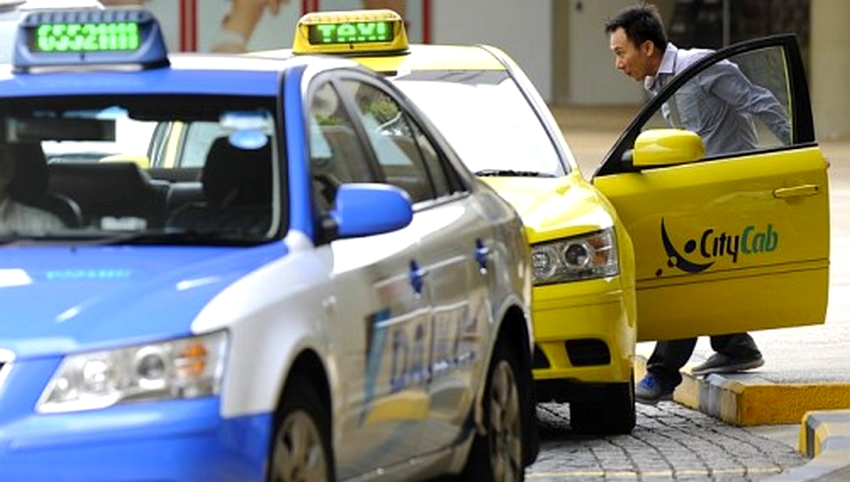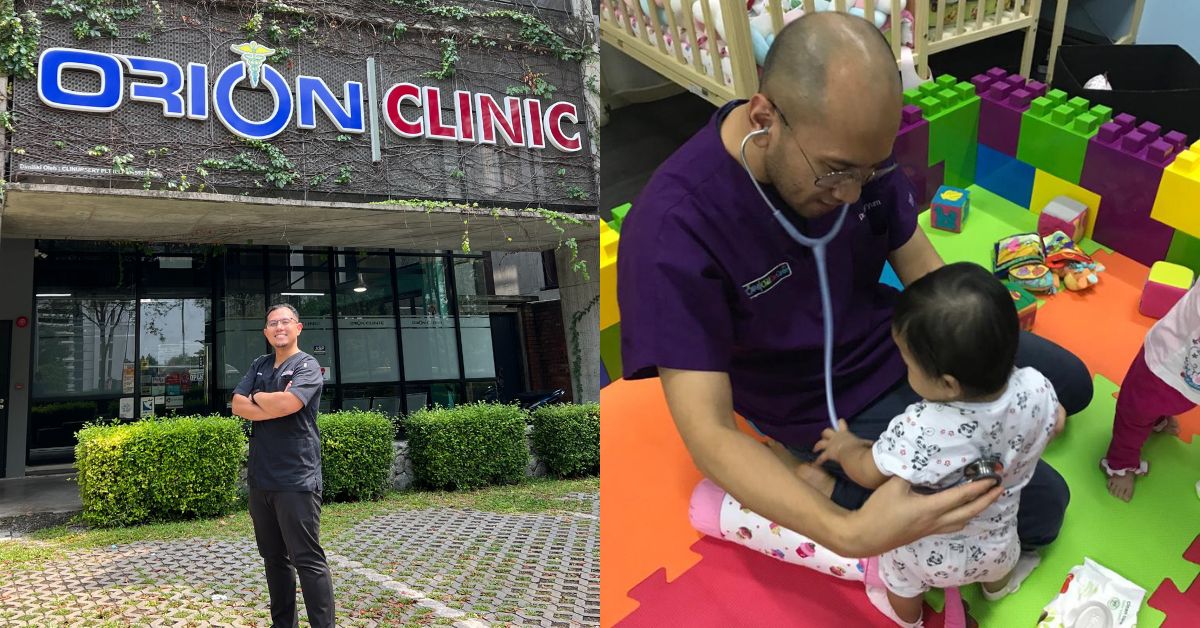It was a Tuesday morning when I got into Mr Tan’s* cab. I had booked it on GrabTaxi, and I had come to know what to expect — grouchy taxi drivers who stayed silent through most of the ride, or particularly angry and ranty uncles who had probably been in bad traffic for too long and needed to vent their frustration. This cab driver was neither — well-spoken, courteous, and particularly chipper, we launched into a friendly conversation on my way to work.
It was then that I decided to try my luck, and asked about what he thought about the latest introduction of GrabCar, the new private car arm of the company he worked with to garner his business.
“Pardon me for saying this miss,” he said. “But I think they (GrabTaxi) have forgotten who got them to where they are today.”
The irony of this was that I had patronized his business thanks to the same technology that he now despised. It’s interesting to think that a mere 5 years ago, taxi booking was the hot new thing, with each taxi company running their own booking hotline. Businesses like GrabCar and Uber have brought this business onto our smartphones, and with them a whole lot of change. But is the change good?

Problems in the Taxi Industry Before
In the startup scene, the word ‘disruption’ is used lightly — every other Silicon Valley startup claims to be disruptive, but more often than not, they hardly even make a dent in the stagnant market they enter. But look at the transport industry in Singapore, and the news it has made in the last two years, and you will see a stagnant industry that has truly been shaken.
Yes, stagnant. The taxi industry in Singapore has taken that top-tier in Singapore’s transport system, above the more affordable MRTs and buses, and thus, has faced the least change in the last few decades. Despite the highly-competitive scene between taxi companies, the lack of innovation in that scene meant that seasoned drivers learnt to play the system, picking and choosing customers as they wished, and preferring to frequent areas with higher success rates. According to GrabTaxi data, peak hour demand can increase up to three times the average, during which the taxi supply is hardly enough.
Booking hotlines quickly grew popular in 2010, but it soon came with its own issues — the hotline system still couldn’t accommodate high traffic (if you remember the Comfort and Citycab jingle, you know what I mean), and there was a high chance of no-shows for customers, leaving taxi drivers frustrated. In 2012, this led to the entrance of taxi-booking apps such as EasyTaxi and GrabTaxi, which empowered taxi drivers by putting the actual booking process into their own hands.
“Booking a taxi could be difficult as commuters only had access to a specific taxi network at a time. Many people would try calling the different numbers of multiple networks; if they could not book a taxi via one network, they would need to call another number and go through the process of calling and waiting for a response while holding on to the line again,” said Lim Kell Jay, General Manager, GrabTaxi Singapore to Vulcan Post.
“Service standards were also found wanting, with some taxi drivers opting not to drive during certain hours even though demand outstripped supply. There was a need for alternative transport options to meet the high demand for taxis.”
The “Uber” phenomenon
Uber entered Singapore at the thick of its popularity, where markets across the world were being shaken up by this alternative to taxis. Private car hires opened the market to laymen to meet increased demand at peak hours, often earning them enough to make a living. While this met the three-fold demand for taxis at peak hours, it also appeared as fresh competition to taxi drivers, it came at the expense of taxi drivers, who hadn’t had any new competition in a while.
In our neighbouring countries, this was met with far more resistance — the state of Jakarta began seizing Uber cars, while Malaysian taxi drivers began attacking Uber drivers in broad daylight (though the tide might be turning). In 2014, Uber was banned in Thailand, though they have since resumed operations after negotiations with Thai officials. The industry was sufficiently jolted from its stagnancy, and in the heat of this debate, Asian counterpart GrabTaxi introduced its answer to Uber — GrabCar.
What Taxi Drivers Want
The anger that Mr Tan* felt was not unfounded — the rise of unregistered private cars acting in a grey area of the law certainly threatened the credibility that taxi drivers like him had worked hard to gain. It was not easy being a taxi driver, Mr Tan told me. He had mouths to feed at home, and part-time drivers who could pretty much be anyone off the streets are trying to do what he’s done for the last few decades.
This was worsened by the strict rules that taxi drivers are faced with: they are to pass a tough taxi driver vocational licence course, and go for a refresher course every six years. In comparison, the private car driver pool are regulated only by the tech company’s guidelines, who are relatively new and inexperienced with Singapore’s transport rules.
“In the regime of all the rules and regulations, it was conveyed to them that this has been designed so that commuters can feel assured,” shared National Taxi Association (NTA)’s executive adviser Ang Hin Kee. What does that then say about private car drivers?
The stark contrast began big conversations — with old and new transport ministers holding talks with taxi drivers and Uber drivers to try to understand both sides of the story. The NTA also held dialogues with cabbies, and at least two rounds of talk with LTA.
As recently elected Minister of Transport Khaw Boon Wan wrote on his blog Moving News: “Apparently, UberX signs on drivers to drive private hire cars to provide a booking type of transport service, and these drivers do not need a vocational licence unlike taxi drivers. While taxi drivers welcome competition, they demand that the playing field be level. I think our taxi drivers have a point.”
The most established voice for taxi drivers in Singapore came when NTA released their suggestions for the Ministry of Transport (MOT) for Private Hire Vehicles. They focused on three key points: an assurance of commuters’ Safety and Security, ensure Fair Competition amongst service providers, and embracing new technology and evolved business models for Greater Efficiency on the use of transport assets. This not only assure that customers are driven by certified drivers and are provided more fare transparency, but also suggest that taxi drivers and private drivers both stay open to new technologies and business models.
– Assuring commuters’ safety and security include the same certification and licensing, identification protocols as well as the need for a clear accountability with regard to unfortunate incidents, disputes and claims.
– A review of operating costs, fees, charges of taxis, and existing availability and service requirements should be done to ensure Fair Competition amongst service providers.
– Emerging technology should be leveraged to improve the riding experience of passengers and matching efficiency of taxi drivers.
These, according to the NTA, would serve to “level the playing field”, a phrase now often uttered in this tense situation.
What Leveling the Playing Field Really Means
When we speak about “leveling the playing field” — a phrase often uttered by taxi drivers — it’s easy to give the impression that the onus is on private drivers to “level up” to meet industry standards. But the truth is that leveling the playing field would mean improving situations for not only taxi drivers, who are feeling discomfort in the new system, but also private drivers who are exploring this new and legitimate career choice. After all, they are the new players to be considered in this equation, and their needs must be treated as importantly as those of taxi drivers.

True, they are facing new pressures to set standards to stay transparent on how drivers are selected, and what code of conduct they work under, but much of this distrust from the industry is based on the fact that it remains a new and unexplored area of work that the Singapore government is still trying to understand.
That said, the livelihoods of GrabCar and Uber drivers should also be protected too – for they are workers after all. NTA advisor Ang Hin Kee, also a Labour MP from the National Trades Union Congress (NTUC), has acknowledged that competition aside, more must be done to protect private car hire drivers. Eventually, policies should find ways to ensure that they too can make a decent living.
Even MP Louis Ng has recently tried his hand at being a GrabCar driver for a day, to truly understand the experience.
Who Fights for Fairness for Our Road Warriors?
Did you know that there are some 99,700 taxi vocational licence holders in Singapore? But of course, not all are driving actively; only about 40,000 are driving taxis. Consider this, while taxi drivers enjoy the freedom and flexibility of self-employment, who fends for the tens of thousands of them in times of need?
As NTA advisor Ang Hin Kee said, the taxi drivers are rent-takers and they are also price-takers. This also renders them relatively defenceless in the face of the taxi operators’ practices as well as LTA’s fare restrictions and regulation.
I suppose this is where NTA comes in. Through conversations and regular dialogues, the NTA gathers feedback about challenges that the taxi drivers face and serve as the conduit to provide the feedback and even make recommendations to the relevant bodies, mostly LTA.

In one of NTA’s latest recommendations to LTA, Mr Ang said that, “… to move forward, commuter safety must be the first priority in any review by the Ministry of Transport. And that is non-negotiable. Taxi drivers in general are looking for fair competition. They have complied with many rules and regulations that has been put forth in the profession for many years, and those regulations are something which they take pride in complying because it actually uplifted the professionalism. And they would like to see the review that MOT put in place will ensure that competition is a fair one.”
This time, NTA is fighting for fair competition for the taxi drivers. This won’t be the first and only time a labour MP has spoken up for taxi drivers. The Labour Movement, through the NTA, has been fighting for fair treatment of taxi drivers for some 50 years.
It is almost poignant when I read in the news today that exactly this week 50 years ago, in 1965, pioneer labour union leader Ho See Beng was in the news for speaking up for taxi drivers in Parliament. The late Mr Ho, who was the Member of Parliament for Bras Basah and also president of the National Trades Union Congress (NTUC) had called for better treatment of taxi drivers.
The Future of Private Car Drivers
Reconciliation will take time, and until then, there will be teething problems. Till then, the companies leading the fray are working with the government to set standards for the grey areas of the industry. For example, companies like Hailo and GrabTaxi have been issued certificates of registration to operate their third-party taxi booking mobile applications in Singapore. We reached out to Uber, and are still awaiting their comments on the matter.
“GrabTaxi believes in collaborating early with the regulators to help set the agenda and navigate the complexities of the relatively new ride-sharing industry. This allows us to pre-empt changes in regulations and ensure that we are compliant before any new guidelines are implemented,” Lim Kell Jay, General Manager, GrabTaxi Singapore to Vulcan Post.
The disruption in the transport industry has solved several problems — it provides a flexible model for the supply of drivers on the road to meet demand as it rises and falls, and the competition has also increased the standard of service provided to customers. The new technology also provides all drivers with better means to connect with their customers, and while the new struggles that taxi drivers meet with are still fresh, there is no doubt that the technology that new apps like GrabTaxi, Uber, and Karhoo bring have improved the way they work and operate.

It was said in a 2010 report by Citigroup analyst Robert Kong that Singapore’s land transport sector will be “set for a dramatic makeover over the next 10 years”, and so far he isn’t wrong. With the introduction of private cars, and now even the prospects of ride-sharing with services like RYDE, GrabHitch, and Tripda, there will be many more tremors to be expected. But the bottom line is this — disruption is nothing without adaptation and innovation. Teething problems should be the least of our worries, and if we play our cards right, the next five years will be something truly to look forward to.
Perhaps the day would come when there would be an association similar to the National Taxi Association to represent the cause of Private Hire Vehicle drivers. For that matter, why don’t the taxi association extend its reach to represent the Private Hire Vehicle Drivers? They’re drivers, all the same, no?









